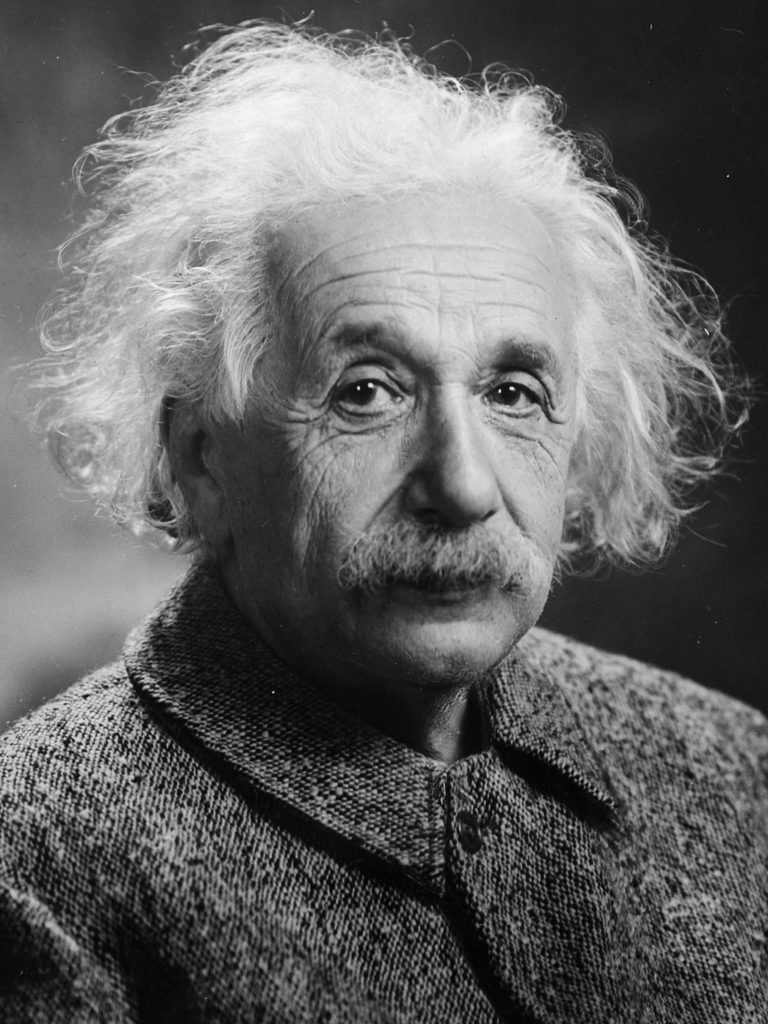
The concept of IQ emerged at the beginning of the 20th century, but formal IQ tests such as WAIS (the Weschler test) did not emerge until the 1950’s. (You can visit this site for a brief history of their development: Why were IQ tests developed originally?) Consequently, Einstein’s IQ was never measured. However, based on his achievements a variety of IQs have been assigned to him. The number 160 is usually attached to his estimated IQ.
A major part of Einstein’s success was his creativity. He once stated:
Imagination is more important than knowledge. For knowledge is limited to all we know and understand, while imagination embraces the entire world, and all there ever will be to know and understand.
It was Einstein’s ability to imagine that the rate at which time is perceived to progress depends on whether or not the observer is in the same frame of reference as the event observed. It was also a feat of imagination or creativity that enabled him to hypothesize that the geometry of space may be non-Euclidean around large masses. The remarkable thing about both of these visions is that they didn’t emerge out of a general consensus among scientists. They appeared as new constructs.
Of course, mastering the mathematics to formulate his theories took a great deal of work, and Einstein was no stranger to hard work. In 1905, while still toiling as a clerk in the Patent Office, he was awarded a doctorate by the Zurich Physics Institute for his 21-page dissertation, A New Definition of Molecular Dimensions. Achieving a Ph.D. in physics was a relatively minor accomplishment for him in that year that has become known as his annus mirabilis (miracle year). On March 17, 1905, just three days after he turned 26, Einstein submitted to the physics journal Annalen der Physik a paper explaining the photoelectric effect–a paper for which he would eventually receive a Nobel Prize. Then, on May 11, just two months later, he submitted to that same journal another opus magnum, this time on Brownian motion, explaining how colliding molecules produce the random motion observed when microscopic particles like pollen grains oscillate in water. Despite the significance of these two papers, they would eventually be eclipsed in importance by a third containing a revolutionary insight captured in his Special Theory of Relativity–an insight that would revolutionize physics irrevocably by challenging Newton’s assumption that space and time are absolute. These three papers, any one of which would have earned Einstein a place among the greatest physicists of all time, appeared in the celebrated Volume 17 of Annalen der Physik in July 1905.
As if this flurry of papers were not enough, on September 27 of the same year, he submitted yet a fourth paper, an “addendum” to his Special Theory of Relativity which was subsequently published in Volume 18. In it, he derived his famous equation E = mc^2 that defines his mass-energy equivalence principle and often serves as an icon for the discoverer himself.
Einstein immersed himself in his work throughout his entire life, and his second wife, Elsa, protected his time by keeping potential visitors at bay. It was a rich combination of IQ (the capacity for abstraction) combined with a passionate interest, outstanding imagination (creativity) and a capacity for hard work that generated these colossal achievements.
